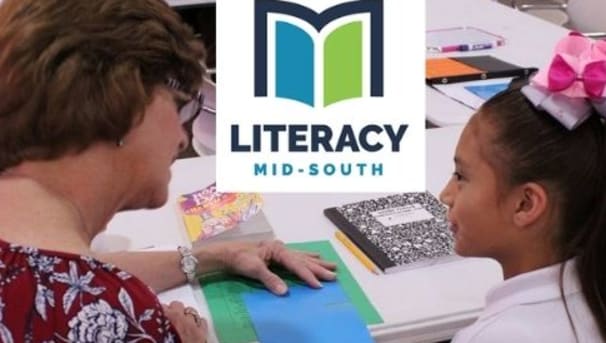© 2025 Closed, All Rights Reserved
Literacy Mid-South
Basic Literacy Facts
- In the U.S., 30 million people over age 16 — 14 percent of the country’s adult population — don’t read well enough to understand a newspaper story written at the eighth grade level or fill out a job application.
- An additional 63 million can only read at a fifth grade level or lower.
- 43 percent of adults with the lowest literacy rates in the United States live in poverty.
- Adult low literacy can be connected to almost every socio-economic issue in the United States:
- More than 65 percent of all state and federal corrections inmates can be classified as low literate.
- Low health literacy costs between $106 billion and $236 billion each year in the U.S.
- 77 million Americans have only a 2-in-3 chance of correctly reading an over-the-counter drug label or understanding their child's vaccination chart.
- Low literacy’s effects cost the U.S. $225 billion or more each year in non-productivity in the workforce, crime, and loss of tax revenue due to unemployment.
- Children from low-income homes hear as many as 30 million fewer words than their more affluent peers.
- By age five, a typical middle-class child recognizes 22 letters of the alphabet, compared to 9 for a child from a low-income family.
- 61% of children from low-income backgrounds have no children’s books at home.
- As early as age three, a child’s vocabulary can predict third-grade reading achievement.
Adults Need Strong Literacy Skills
…to raise children who have strong literacy skills. Learning to read begins long before a child enters school. It begins when parents read to their children, buy their children books, and encourage their children to read. The research is clear: parents who are poor readers don’t read as often to their children as do parents who are strong readers; children who are not read to enter school less prepared for learning to read than other children.
…to be good employees. The employees most in demand in the U.S. have at least a two-year college degree. Workers must be able to read safety regulations and warnings so they and their co-workers can stay safe on the job. And working in a team means that employees must be able to communicate clearly with one another.
…to keep themselves and their families healthy. Understanding a doctor’s orders, calculating how much medicine to take, reading disease-prevention pamphlets—all are ways adults can keep themselves and their families healthy. But millions of adults lack these essential “health literacy” skills, which adds an estimated $230 billion a year to the cost of health care in the U.S.
…to be active in their communities. Political campaigns in the U.S. often stress the need for “informed voters.” But how can an individual be well informed if he or she cannot access written campaign literature or read newspaper coverage of the issues and candidates? The 2003 National Assessment of Adult Literacy, conducted by the U.S. Department of Education, showed that low literate adults are less likely to vote than strong readers, but become more active in their communities as their reading and writing skills improve.
…to advocate for themselves and avoid human rights abuse. People must be aware of their rights in order to assert them. Literacy gives people access to that information. Literacy plays a significant role in reducing gender inequality. Cultural traditions and local laws often favor men, allowing them access to education, property, employment, health care, and government participation that is denied to women.
…to avoid crime. There is a clear correlation between adult illiteracy and crime. More than 45 percent of all inmates in local jails, 40 percent in state facilities, and 27 percent in federal corrections institutions did not graduate from high school. Inmates age 24 and younger are less educated.
